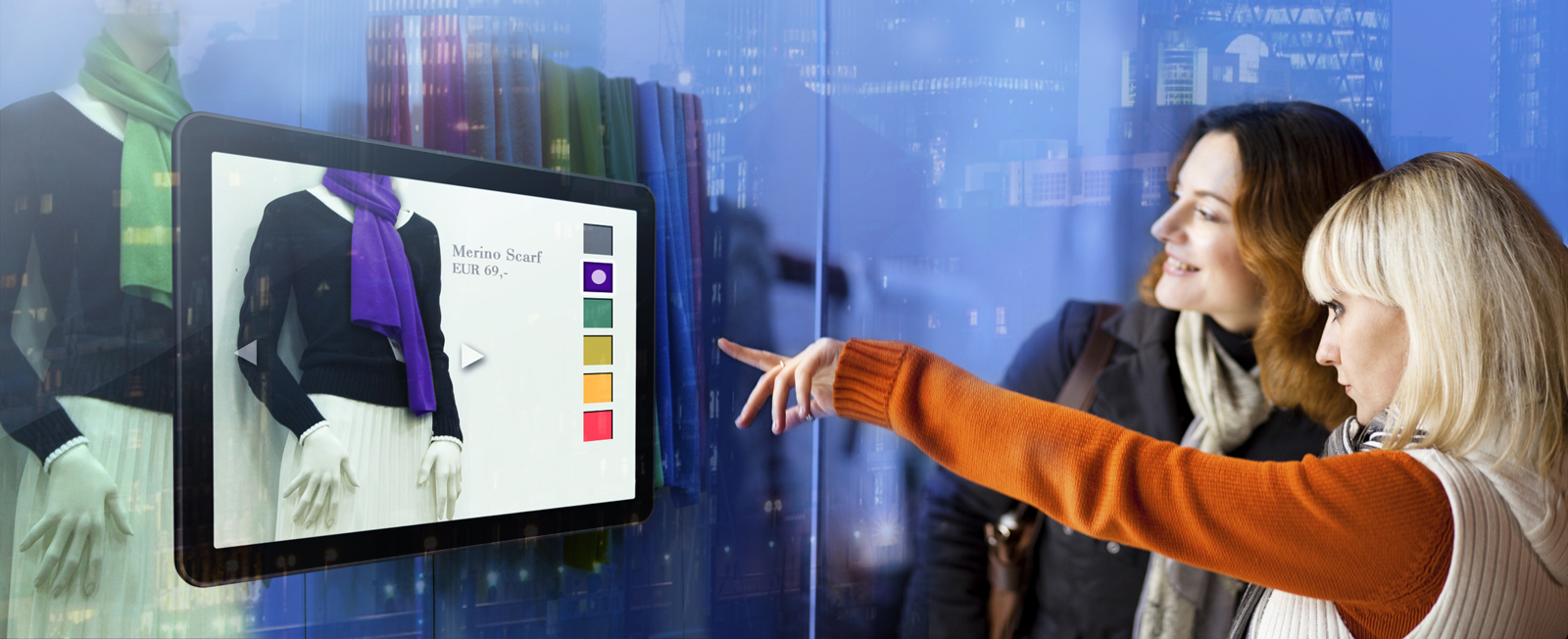Interactive Window Shopping
Researchers want to make shopping trips a special experience in future by enabling passers-by to operate window displays with hand and facial gestures. Four cameras record the 3-D positions of people’s hands, face and eyes and transform them into commands for selecting and purchase goods – even after the shop has closed.
A woman passing by the window display is captivated and asks her companion “Isn’t the leather bag chic?” “Which one do you mean? There are so many of them.” The woman points to one of the bags and as if by magic the luxurious purse appears on a display behind the shop window. Then she points to a button and the designer object rotates on the screen. “So that’s what it looks like from the back.” The woman passing by is impressed. She makes another gesture to zoom the bag towards her letting her to see every detail.
This particular shopping experience is courtesy of new type of 3-D camera system from the Fraunhofer Institute for Telecommunications, Heinrich Hertz Institute (HHI) in Berlin, Germany. Its interactive shop window enables people passing by to put goods behind shop windows onto a display with simple hand and facial gestures. Paul Chojecki is a scientist at the Fraunhofer Institute for Telecommunications, Heinrich Hertz Institute and he puts it this way: “Interactive shopping has been standard operating procedure in the web for a long time. Now, we’re putting this technology into pedestrian passageways and shopping centers with the entire unit behind the window.”
Four little cameras continually record the 3-D positions of the hands, faces and eyes of persons passing by. Then, image-processing software calculates the coordinates and transforms them into the corresponding inputs for selecting goods, viewing them in detail and immediately purchasing them – even after business hours. Anyone interested can have also themselves shown product information such as color, material, price, availability and information on the manufacturer. Paul Chojecki remarks that “there’s nothing comparable in Germany yet and today shops only use touchscreens in shop windows, if at all. But, you can interact with our interactive shop window without any physical contact, which is a benefit if hygiene is important to you.“
The interactive shop window consists of four cameras and visualization software. Two of these stereo cameras record the face and eyes while the other two record the motion of the hands. Image processing recognizes both gestures such as when you turn your hand and when you point to a button with your finger that you can see on a monitor. The researcher adds that “the system doesn’t store any personal data and only the coordinates of the body parts it recognizes are passed onto the visualization.”
Interactive shop window is compatible with all displays and the shop owner can select any monitor size or type of monitor from plasma, LED, LCD, projection or reprojection screens. Beyond this, shop owners can link the system with any software already there such as content management or merchandise information system enabling them to portray all of their stock of goods on the display. The way the payment process is taken care of is also left up to the shop owner. But that’s not all. The interactive shop window not only identifies how many people are in front of the shop window, but it also can suggest on the basis of the gathered data what products and information the people passing by are interested in. Finally, it has customized greeting texts on the display to guarantee a close bond to the customer.
The interactive shop window was developed for use in shopping centers and the retail trade, although Chojecki thinks it would be possible to install it in museums or at trade fairs. This 3-D recording system is only a prototype at present, but the researchers will be demonstrating it at the CeBit Fair in Hannover, Germany Fraunhofer’s joint stand (Hall 9, Stand B36) March 1 to 5, 2011.
